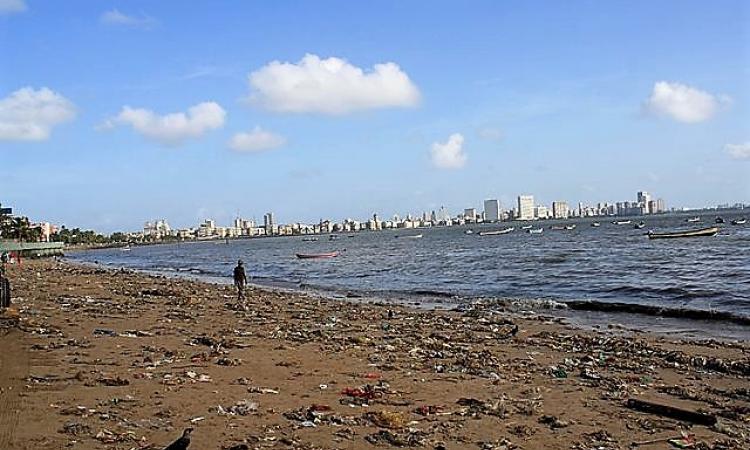
The coastal regions of India are becoming increasingly vulnerable to climate changes, developmental activities and urbanisation. Sustaining the livelihoods of fishing communities and preserving the health of coastal ecosystem and biodiversity are important challenges that India faces.
This article, Coastal ecology and fishing community in Mumbai: CRZ policy, sustainability and livelihoods, published in the Economic and Political Weekly dated September 24, 2016, informs that the Coastal Regulation Zone (CRZ) notification of 1991 by the Ministry of Environment and Forests (MoEF) was a key landmark in Indian environmental policy and legislation. The notification revealed India’s interest in protecting and conserving environmental resources and the livelihoods of the resource-dependent populations.
With the start of economic reforms and the subsequent liberalisation, however, the protective provisions of the notification were either violated or not implemented. A number of amendments also diluted its provisions. As a result, a large number of environment-destructive projects came up in the coastal areas causing irreversible damage to the fragile coastal and marine ecosystem, destroying the livelihoods of coastal communities.
Impact of dilution of CRZ on coastal areas
By using coastal areas of Mumbai as an example, the article links the politics of policy making on coastal zones to broader debates on livelihoods and environmental sustainability. The idea behind the CRZ notification was to bring in a balance between the diverse needs of infrastructure development, preservation of the ecosystem and livelihood security of the fishing communities. The enforcement agencies, according to the article, have been extremely apathetic in implementing CRZ norms, which is reflected in the non-availability of CRZ maps of the required scale and in deliberately ignoring issues of public participation and local contexts. Coastal state authorities do not take issues of enforcement seriously. Many development researchers and activists consider the CRZ policy as mere paper tiger and questions are being raised about who the policy is designed for and who benefits from it.
The article cites fishing villages across the Mumbai Metropolitan Region (MMR), including Cuffe Parade, Colaba, Mumbai Port Trust, Sewri in the south, Mulund and Thane in the north, and Chimbai in the west as examples of the violation of CRZ rules. The state and municipal agencies such as the Municipal Corporation of Greater Mumbai (MCGM) and Maharashtra Coastal Zone Management Authority (MCZMA), while implementing CRZ rules and evolving an Integrated Coastal Zone Management Project (ICZMP) for the coastal and marine ecosystems, have allowed several violations to happen and have failed to protect the livelihoods of the fisherfolk.
Marginalising the Koli fisherfolk
The violation of CRZ rules has resulted in the encroachment of land and its scarcity, pushing the indigenous Koli fisherfolk in Mumbai out of fishing activities. A number of public sector industries such as Hindustan Petroleum Limited (HPL), Bharat Petroleum Limited at Mahulgaon in Chembur, Bhabha Atomic Research Centre (BARC) at Trombay, MPT at Sewri, and Jawaharlal Nehru Port Trust at Elephanta Island are located in CRZ areas and their activities have been found to be severely polluting the coast, affecting fishing. Now, most Koliwadas no longer own fishing paraphernalia and the fisherwomen are forced to occupy public spaces to sell fish.
Urbanisation has led to the rapid destruction of mangroves and coastal ecosystems, adversely affecting small-scale fisheries, the principal source of livelihood for traditional fishing communities in Mumbai region. Fishers in localities such as the Thane–Mulund creek and Bhandup village have gradually abandoned fishing and adopted other occupations. Traditional small-scale fishers are also being threatened by large-scale commercial fishing activities that involve big trawlers and purse seiners. Migrant encroachments have occupied most of the space in the area making it difficult to find space for schools, health facilities or decent housing facilities for Koliwadas. Overcrowding and increase in commercial and industrial activities have led to the dumping of wastes and pollutants into the sea, resulting in the decline of fish populations.
A change in perspective needed
The article says the CRZ 2011 seems to be struggling to please the “development” lobby while appeasing the fishing communities as well as environmentalists. However, unless the government implements the rules effectively by prioritising the needs of the fishing community and focusing on the conservation of the environment, the rules won’t yield results. The aims and objectives of the 74th Constitutional Amendment (1992) to decentralise decision-making in urban areas have not been taken seriously while planning and implementing CRZ rules in the coastal areas in Mumbai. The 74th amendment gives urban local bodies more powers and functions to operate independently of higher government agencies. It provides autonomy to the citizen-centric planning process and offers opportunities for citizen participation in local governance at many levels like budgeting, planning, land use and zoning issues.
The article ends by saying that the CRZ-related agencies need to link with decentralised urban local bodies to oversee the ongoing coastal activities and to coordinate with these agencies in ensuring environmental protection. This will go a long way in stopping further deterioration of Mumbai’s sensitive coastal ecological system and further marginalisation of the fishing communities.
A copy of the paper can be downloaded from below:
/articles/mumbais-vanishing-coasts